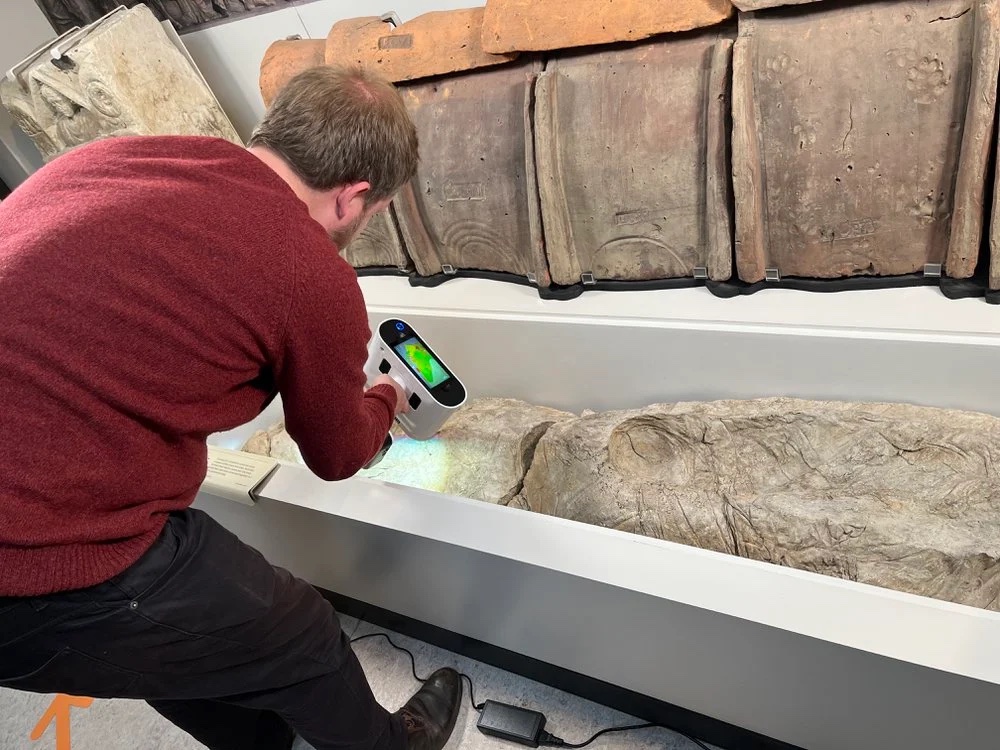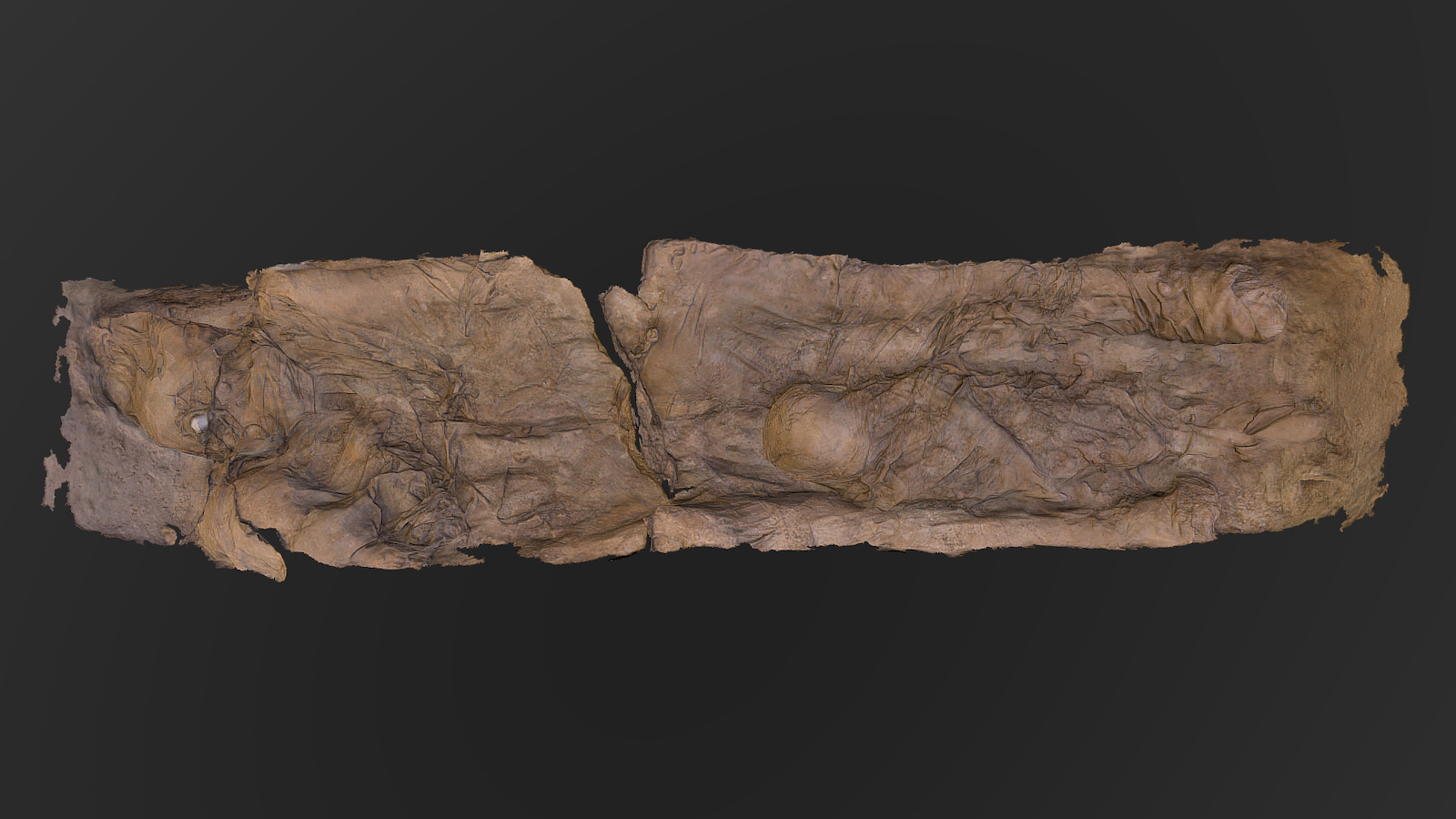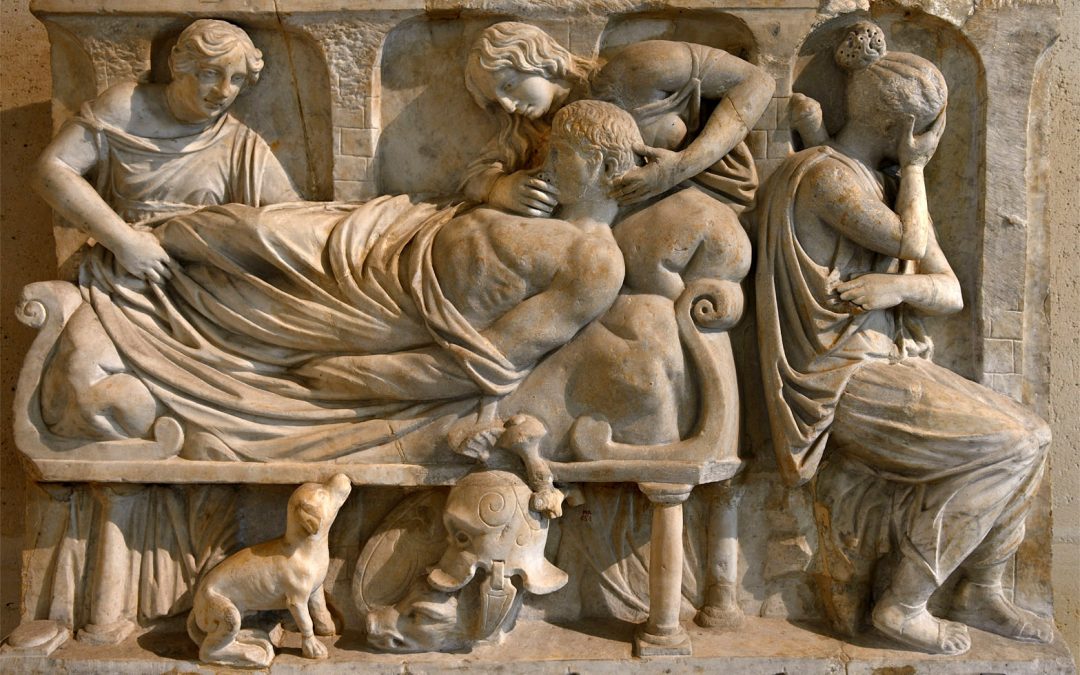Archeology and 3D technologies: new light on a Roman funerary practice
In recent weeks, archaeologists at the University of York have resorted to the use of 3D scanners to study a very particular Roman burial practice: for still unknown reasons, the ancients sometimes used to pour liquid chalk on the bodies before burying them, creating an indelible imprint of their clothing and position. This has allowed scholars to better analyze the shroud, clothing and footwear, all elements that are usually perishable and therefore rarely survived inside Roman tombs.

A researcher scans the negative cavity in the gypsum casing
Courtesy University of York
This type of burial is thought to be associated with high-ranking characters and, although it has been found in very different geographical regions, it is mainly widespread in the British area. In particular, the Yorkshire Museum has sixteen chalk tombs, the largest and most important collection on English soil. For this reason, the York Museum Trust, in collaboration with the University of York and Heritage 360, has decided to undertake in-depth studies on these very particular finds.
An even more particular burial was chosen for the analysis, where three individuals, presumably two adults and a child belonging to the same family, were buried together. This is where 3D technology comes into play: “The contours of the three individuals in the gypsum can be seen with the naked eye, but it is difficult to make out the relationship of the bodies to each other and to recognise how they were dressed or wrapped,” said Maureen Carroll, chair of the Roman archaeology department at the University of York. “The resulting 3D model clarifies these ambiguities in stunning fashion.”

The results of 3D scanning on the gypsum burial
Courtesy University of York
The renderings reveal for the first time the poignant details of this family tragedy that occurred almost 1500 years ago, such as the strings used to secure the shroud on the head of one of the adults and the woven bands used to wrap the newborn. These remind us “not only of the fragility of life in antiquity but also of the care with which the dead were buried”. The example of York demonstrates the potential of 3D scanning technologies to offer a unique window on the events of the past, proving to be increasingly essential in the future of archaeological and historical-artistic research.

